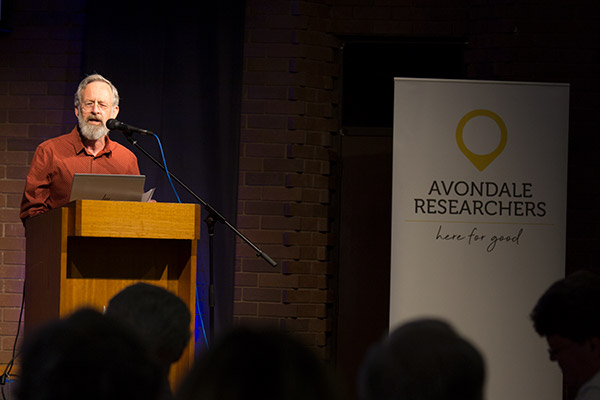Avondale authors share research for Adventist heritage celebration
Avondale academics and alumni have shared research about pioneering Seventh-day Adventists in the South Pacific as part of the worldwide church’s Heritage Sabbath (October 19).
Presentations at the Adventist Heritage Here for Good Colloquium were based on articles the authors were writing for the new Encyclopedia of Seventh-day Adventists.
Senior lecturer in international poverty and development studies Dr Brad Watson spoke about Australian indigenous missionaries. He is collaborating with the church’s Aboriginal and Torres Strait Islander Ministries on a research project about Mona Mona Mission.
Vice-President (Academic) Professor Stephen Currow spoke about missionary Captain Griffith Jones, who started the work of the church in the Solomon Islands. Historian Lynnette Lounsbury (Adventist education in the Solomon Islands) has close ties to the archipelago—her grandmother, father, mother and brother have all worked there, and Lounsbury has volunteered over a decade as part of a teacher education program.
Reconnecting with the vision and sacrifice of our church’s pioneers inspired me. But considering issues in a different time and place and reflecting on why we haven’t learnt the lessons from history challenged me.Professor Stephen Currow, Vice-President (Academic), Avondale University CollegeHistorian Professor Daniel Reynaud, whose research interests lie in challenging aspects of Anzac mythology, spoke about the impact World Wars I and II made on the church. School of Science and Mathematics Head Dr Lynden Rogers and alumna Marian de Berg profiled more contemporary pioneers (historian Dr Arthur Patrick and evangelist John Benjamin Conley).
The encyclopedia’s regional editor Dr Barry Oliver, the former president of the church in the South Pacific, spoke in a video produced for the colloquium about Avondale’s influence on the project. Sixteen of its lecturers have written at least one article, he reported. Twelve of its conjoint associate professors have also contributed. The total number of articles written by Avondale academics and alumni: 323. “Now just in case you think these articles are just a few sentences, a couple of paragraphs, no way,” said Oliver. “The article on Avondale College, for example, is 25,000 words.” Oliver is grateful for the willingness of those in the Avondale community to contribute. “They’re not getting remunerated. They’re not getting any sort of kudos from this except for contributing to the history and to all things Seventh-day Adventist.”
Currow describes the colloquium as an inspiration and as a challenge. “Reconnecting with the vision and sacrifice of our church’s pioneers inspired me. But considering issues in a different time and place and reflecting on why we haven’t learnt the lessons from history challenged me.”
The colloquium coincided with a visit from a panel representing the Adventist Accrediting Association. Dr David McClintock, Director of Adventist Education for the church in the South Pacific, says his fellow panel members commented favourably about the spread of topics and the depth of research. “A comment that resonates with me is the desire to share more of the encyclopedia articles given the obvious expertise of the Avondale staff.”
Avondale Researchers: Here For Good, which aligns the mission of Avondale with its research agenda, presented the colloquium as the first in the Adventist Heritage series. Associate Dean (Research) Dr Carolyn Rickett plans for more each October. “We want to share and showcase this research to continue important conversations with our wider community about the mission and ethos that shaped our past, informs our present and directs our future.”
Adventist Heritage Sabbath falls on the Saturday closest to October 22, when in 1844 the Millerite Movement waited expectantly for Jesus’ Second Coming, later realising it had misinterpreted biblical prophecy. The leader of the movement, Baptist preacher William Miller, influenced a group of believers who in 1863 established the Adventist Church.
The day is now an opportunity for the church to actively participate in preserving its “dynamic” heritage. “One of my favourite descriptions of our church was used by our early Adventist pioneers—the Great Second Advent Movement,” says Dr David Trim, director of the worldwide church’s Office of Archives, Statistics and Research. “Sometimes the way we do church tells people, ‘It’s OK to be a spectator. And actually our church is about being engaged and moving forward. Our faith isn’t something that stands still; we play an active role in transmitting it from generation to generation.”—with Adventist News Network
Encyclopedia of Seventh-day Adventists
Regional Editor for the Seventh-day Adventist Church in the South Pacific Dr Barry Oliver speaks about Avondale University College’s influence on the Encyclopedia of Seventh-day Adventists.
WATCH VIDEOShare

